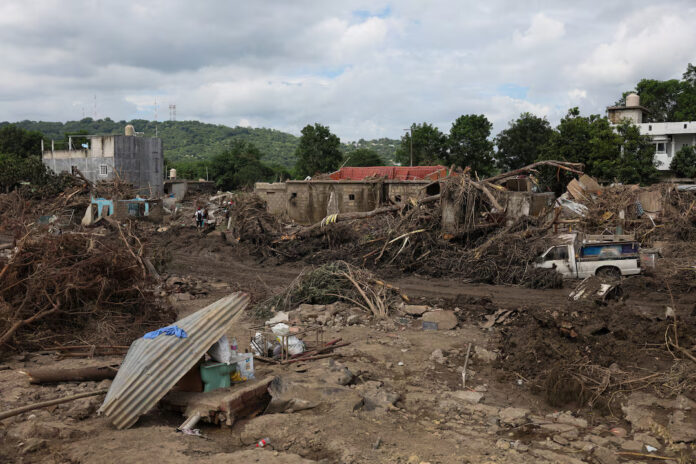
Five days after catastrophic floods swept across central and eastern Mexico, killing at least 66 people and damaging more than 100,000 homes, authorities are still struggling to locate 75 missing residents and deliver aid to the worst-hit communities.
The disaster, among the deadliest in recent years, has become a major test for President Claudia Sheinbaum, whose administration is facing sharp criticism over its emergency response and the government’s preparedness.
The president has been met with angry crowds and heckling during visits to disaster zones, a rare setback after a year of soaring approval ratings.
The floods were triggered by torrential rains that caused rivers to overflow, set off landslides, and collapsed bridges across several states, including Veracruz, Hidalgo, and San Luis Potosí.
Entire neighborhoods were submerged, with local residents saying they received little or no warning before the deluge hit.
“There were no scientific or meteorological conditions that could have indicated to us that the rainfall would be of this magnitude,” Sheinbaum told reporters on Monday, noting that authorities had been focused on two Pacific storms rather than the sudden Gulf Coast downpours.
Political analyst Antonio Ocaranza said that while Sheinbaum’s visible presence on the ground has earned some praise, the broader response reflects “a problem of competence in the initial reaction to the tragedy,” citing delays in delivering heavy equipment and supplies.
The crisis has reignited debate over the abolition of Mexico’s Natural Disaster Fund (Fonden), which was dismantled under former President Andrés Manuel López Obrador due to alleged corruption.
Critics say its absence has left the government ill-equipped to finance disaster recovery.
Sheinbaum has defended the decision, arguing that “defending Fonden is like defending corruption.” She insisted that sufficient funds remain available, saying 19 billion pesos ($1.03 billion) have been set aside for emergencies, with 3 billion pesos already allocated to the flood response.
Speaking Wednesday in San Luis Potosí, Sheinbaum announced a two-stage relief plan: cleanup operations beginning next week, followed by financial “support” based on the level of household damage, with longer-term efforts focused on repairing roads and drainage systems.
Opposition lawmakers, however, accused the government of improvisation and failing to learn from past crises, such as Hurricane Otis in 2023. “There’s no capacity to respond. It’s always the same response, improvisation,” said Deputy Gibrán Ramírez of the Citizens’ Movement party.
As search and rescue operations continue, survivors in Veracruz, where at least 29 people have died, have expressed frustration and despair.
On Sunday, residents searching for missing relatives confronted Sheinbaum directly, holding up photos of loved ones and demanding faster action.
With entire communities cut off and infrastructure destroyed, Mexico faces a long and painful recovery, one that will test not only the resilience of its people but also the credibility of Sheinbaum’s leadership.


















